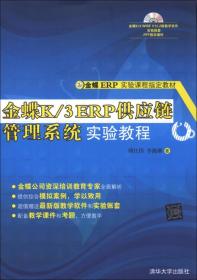
E-finance 网络金融
二手书,此书是一本无赠品和附件,非套装,购买套装请联系客服
¥ 13.83 2.5折 ¥ 56 八五品
仅1件
山东济南
认证卖家担保交易快速发货售后保障
作者刘河伟 著
出版社电子工业出版社
出版时间2014-03
版次01
装帧平装
货号9787121220982
上书时间2024-09-30
- 在售商品 暂无
- 平均发货时间 8小时
- 好评率 暂无
- 最新上架
商品详情
- 品相描述:八五品
图书标准信息
- 作者 刘河伟 著
- 出版社 电子工业出版社
- 出版时间 2014-03
- 版次 01
- ISBN 9787121220982
- 定价 56.00元
- 装帧 平装
- 开本 16开
- 纸张 胶版纸
- 页数 400页
- 字数 886千字
- 正文语种 英语
- 【内容简介】
-
“网络金融”是指以技术创新为主导动力,以质量型增长为内涵的新经济形态。它是网络技术与金融相互结合的产物。从狭义上理解,网络金融是指以金融服务提供者的主机为基础,以因特网或者通信网络为媒介,通过内嵌金融数据和业务流程的软件平台,以用户终端为操作界面的新型金融运作模式;从广义上理解,网络金融的概念还包括与其运作模式相配套的网络金融机构、网络金融市场以及相关外部环境。其内容包括电子货币、网络银行、网上支付、网络证券和网络保险等。
本书通过案例详细阐述了传统金融行业的投资、货币概念和银行产品,投资理财的核心思想以及对网络银行系统的分析。在E-finance方面加入了现代比特币和E-stock理论研究,是高等学校电子商务专业本科生双语教学的先锋教材。 - 【作者简介】
- 2010.2-至今,桂林理工大学讲师。2010年回国以后,担任电子商务专业4个年级专业课讲师;担任电子商务专业必修《电商概论》主讲,《网上创业》主讲,《PhP+Mysql》主讲;双语《usability》主讲;双语《Web Project management》主讲;双语《管理学》主讲。
- 【目录】
-
目 录
Contents
1 Introduction1
1.1 E-finance Technologies in Payment Services1
1.2 History of E-finance in US2
1.3 Two Questions3
1.4 Debit Cards4
1.5 The E-finance Impact on Financial Markets7
1.5.1 Stock Markets7
1.5.2 Foreign Exchange Markets9
1.5.3 Bond Markets10
1.5.4 Concluding Remarks10
2 Bitcoin: A Peer-to-Peer Electronic Cash System11
2.1 What Is a Bitcoin ?11
2.1.1 Introduction11
2.1.2 Creation of Coins12
2.1.3 Sending Payments12
2.1.4 Preventing Double-Spending14
2.2 Anonymity15
2.3 Where to See and Explore?15
2.4 How Many People Use Bitcoin?16
2.5 Why Does My Bitcoin Address Keep Changing?17
2.6 Network18
2.6.1 The Steps to Run the Network18
2.6.2 What Is Mining?18
2.6.3 Simplified Payment Verification20
2.6.4 Combining and Splitting Value20
2.7 Security20
2.7.1 Privacy20
2.7.2 There Are Two Questions21
2.7.3 Criminal Activities22
2.7.4 Theft23
2.8 Taxation and Regulation24
2.9 Conclusion25
3 Capital Markets and Financial Services26
3.1 What Is Investment Capital?26
3.2 Characteristics of Capital26
3.2.1 Sources of Capital27
3.2.2 Users of Capital29
3.3 The Role of Financial Instruments30
3.3.1 Debt30
3.3.2 Equity30
3.3.3 Investment Funds31
3.3.4 Derivatives31
3.4 The Role of Financial Markets31
3.4.1 Stock Exchanges around the World32
3.4.2 Exchange Memberships33
3.5 Governing Bodies and Administration33
3.5.1 Boards of Directors33
3.5.2 Statutory Responsibilities34
3.5.3 Future Trends34
3.6 Dealer Markets the Unlisted Market35
3.6.1 The Unlisted Equity Market35
3.6.2 The Fixed-Income Marketplace36
3.7 The Role of Financial Intermediaries36
3.7.1 Size and Characteristics of the Securities Industry Today37
3.7.2 Financing Securities Houses41
3.7.3 Principal and Agency Functions42
3.7.4 Dealer, Principal and Agency Transactions43
4 Financing, Listing and Regulations45
4.1 Financing45
4.1.1 Government Financing46
4.1.2 Corporate Finance48
4.2 Corporations Financing Process48
4.2.1 The Dealer’s Advisory Relationshipwith Corporations49
4.2.2 The Method of Offering49
4.3 Advice on the Security to Be Issued51
4.4 The Prospectus52
4.4.1 The Short Form Prospectus System55
4.4.2 Internet Prospectus55
4.5 Other Documents and Sale of the Issue56
4.6 The Financing Process57
4.6.1 After-market Stabilization59
4.6.2 Other Methods of Distribution60
4.6.3 Junior Company Distributions60
4.7 Options of Treasury Shares61
4.7.1 The Listing Process61
4.7.2 Advantages of Listing61
4.7.3 Disadvantages of Listing62
4.7.4 Disadvantages of Listing62
4.7.5 The Listing Application62
4.7.6 Regulations for Listed Companies63
4.7.7 Withdrawing Trading Privileges63
4.8 Temporary Interruption of Trading63
4.8.1 Delayed Opening63
4.8.2 Halt in Trading64
4.8.3 Suspension of Trading64
4.9 Cancelling a Listing (Delisting)64
4.10 Regulation and Investor Protection64
4.10.1 Underlying Principles of Provincial Securities Legislation64
4.10.2 Registration65
4.10.3 The National Registration Database (NRD)66
4.11 Designated Non-trading Employees66
4.12 Securities Firms66
4.13 Know Your Client Rule67
4.14 Breach of Fiduciary Duty67
4.15 Public Company Disclosure and Investor Rights70
4.16 The Purchasers’ Statutory Rights71
4.17 Continuous Disclosure72
4.18 Takeover Bids73
4.19 Early Warning Disclosure75
4.20 Insider Trading75
4.21 Investigation and Prosecution76
5 Corporations and their Financial Statements77
5.1 Types of Business Structures77
5.2 Incorporated Businesses78
5.2.1 Government Approval78
5.2.2 Choice of Jurisdiction78
5.2.3 Public and Private Corporations79
5.2.4 The By-laws79
5.2.5 Voting and Control79
5.2.6 Shareholders’ Meetings80
5.2.7 Voting Trusts80
5.2.8 Directors81
5.2.9 Officers82
5.2.10 Financing the Corporation82
5.2.11 Advantages of Incorporation85
5.2.12 Disadvantages of Incorporation86
5.3 Understanding the Balance Sheet86
5.3.1 General Form of the Balance Sheet87
5.3.2 Classification of Assets88
5.3.3 Classification of Liabilities94
5.3.4 Shareholders’ Equity97
5.4 Understanding the Earnings Statement98
5.4.1 What It Shows98
5.4.2 Structure of the Earnings Statement99
5.4.3 The Operating Section (items 28 to 34)100
5.4.4 Non-Operating Section (item 35)102
5.4.5 The Creditors’ Section (items 37and 38)102
5.4.6 The Owners’ Section (items 40 to 45)102
5.5 Understanding the Retained Earnings Statement104
5.6 Understanding the Cash Flow Statement105
5.6.1 Introduction105
5.6.2 Operating Activities106
5.6.3 Financing Activities (items 51 to 54)107
5.6.4 Investing Activities (items 55 to 57)107
5.6.5 Change in Cash Flow (items 58 to 60)107
5.6.6 Supplemental information (items 61 to 62)108
5.7 Other Information in the Annual Report108
5.7.1 Footnotes to the Financial Statements108
5.7.2 The Auditor’s Report109
5.8 Specimen Financial Statements110
6 Fixed-income Securities115
6.1 Definitions115
6.1.1 Fixed-income Securities115
6.1.2 Bonds and Debentures115
6.1.3 Interest115
6.1.4 Face Value and Denomination116
6.1.5 Price and Yield116
6.1.6 Term to Maturity117
6.1.7 Liquid Bonds, Negotiable Bonds, and Marketable Bonds117
6.2 The Rationale for Issuing Fixed-Income Securities117
6.2.1 Financing Operations or Growth118
6.2.2 Financial Leverage118
6.3 Size of the Fixed-income Market118
6.4 Features and Provisions of Bonds119
6.4.1 Call or Redemption Feature119
6.4.2 Sinking Funds and Purchase Funds120
6.4.3 Extendible and Retractable Bonds121
6.4.4 Convertible Bonds and Debentures121
6.4.5 Protective Provisions124
6.5 Types of Fixed-income Securities127
6.5.1 Government of Canada Securities127
6.5.2 Provincial Government Securities and Guarantees130
6.5.3 Municipal Debentures/Installment Debentures132
6.5.4 Corporate Bonds133
6.5.5 Other Types of Fixed Income Securities136
6.5.6 Reading Bond Quotes138
6.5.7 The Bond Rating Services139
6.6 Bond Pricing Principles140
6.6.1 The Use of Present Value140
6.6.2 Calculations for Fixed-Income Securities143
6.6.3 Theories of Interest Rate Determination145
6.6.4 Fixed-Income Pricing Properties148
6.6.5 The Yield Curve and Bond Switching153
6.7 Delivery, Settlement and Regulation156
6.7.1 Bond Delivery156
6.7.2 Clearing and Settlement156
6.7.3 Regulation of Bond Trading157
6.7.4 Accrued Interest158
6.8 Bond Indexes160
6.8.1 Uses of Bond Indexes160
6.8.2 Scotia Capital Canadian Bond Market Indexes160
6.8.3 Merrill Lynch Global Indexes161
6.8.4 Other Index Providers161
7 Equities162
7.1 Common Shares162
7.2 Rights and Advantages of Common Share Ownership162
7.2.1 Capital Appreciation163
7.2.2 Dividends163
7.2.3 Voting Privileges167
7.2.4 Tax Treatment168
7.2.5 Marketability170
7.2.6 Stock Splits and Consolidations170
7.2.7 Reading Stock Quotations172
7.3 Preferred Shares173
7.3.1 The Preferred’s Position173
7.3.2 Preference as to Assets173
7.3.3 Preference as to Dividends174
7.3.4 Features of Preferred Shares174
7.3.5 Special Protective Provisions177
7.3.6 Why Do Companies Issue Preferred Shares?178
7.3.7 Who Buys Preferred Shares?178
7.4 Types of Preferreds179
7.4.1 Fixed Rate (or Straight) Preferreds179
7.4.2 Convertible Preferreds179
7.4.3 Retractable Preferreds182
7.4.4 Floating Rate Preferreds183
7.4.5 Foreign-pay Preferreds184
7.4.6 Canadian Originated Preferred Securities (COPrS)184
7.4.7 Other Types of Preferreds185
7.5 Cash and Margin Accounts186
7.5.1 Cash Accounts186
7.5.2 Margin Accounts188
7.6 Short Selling of Equities190
7.6.1 What Is Short Selling?190
7.6.2 How is Short Selling Done?190
7.7 Equity Transactions194
7.7.1 An Agency Transaction�Trading Procedures194
7.7.2 Settlement Procedures195
7.7.3 Other Transaction Models196
7.8 Buy and Sell Orders197
7.8.1 Market Order197
7.8.2 Limit Order197
7.8.3 Day Order197
7.8.4 Good Till Cancelled (GTC) Order197
7.8.5 All or None Order (AON Order)197
7.8.6 Any Part Order198
7.8.7 Good Through Order198
7.8.8 Stop Loss and Stop Buy Orders198
7.8.9 The Preferential Trading Rule and the Pro or N-C Order199
7.9 Stock Indexes and Averages199
7.9.1 What Is a Stock Index?199
7.9.2 What Is an Average?200
7.9.3 Canadian Market Indexes200
7.9.4 U.S. Stock Market Indexes204
7.9.5 International Stock Market Indexes and Averages207
8 Derivatives209
8.1 What Is a Derivative?209
8.1.1 Features Common to All Derivatives209
8.1.2 Derivative Markets210
8.1.3 Key Differences Between Exchange-traded and OTC Derivatives211
8.2 Types of Underlying Assets213
8.2.1 Commodities213
8.2.2 Financials214
8.3 Who Uses Derivatives and Why Do They Use Them?215
8.3.1 Individual Investors215
8.3.2 Institutional Investors216
8.3.3 Corporations and Businesses217
8.3.4 Derivative Dealers218
8.4 Options219
8.4.1 Key Terms and Definitions219
8.4.2 Option Exchanges223
8.4.3 Reading an Options Quotation223
8.4.4 Basic Option Strategies for Individual and Institutional Investors224
8.4.5 Basic Option Strategies for Corporations232
8.5 Forwards233
8.5.1 Futures: Key Terms and Definitions233
8.5.2 Futures Exchanges235
8.5.3 Reading a Futures Quotation235
8.5.4 Basic Futures Strategies for Investors236
8.5.5 Basic Futures Strategies for Corporations238
8.6 Rights and Warrants240
8.6.1 Rights240
8.6.2 Warrants244
9 Hedge Funds246
9.1 Overview of Hedge Funds246
9.1.1 What Is a Hedge Fund?246
9.1.2 Comparing Hedge Funds to Mutual Funds246
9.1.3 Who Can Invest in Hedge Funds?246
9.1.4 History of Hedge Funds248
9.1.5 Size of the Hedge Fund Market249
9.2 Portfolio Theory and Hedge Funds249
9.2.1 Portfolio Theory250
9.2.2 Measuring Portfolio Performance252
9.3 Benefits and Risks of Hedge Funds254
9.3.1 Benefits of Hedge Funds254
9.3.2 Risks Associated with Hedge Funds255
9.3.3 Due Diligence259
9.4 Hedge Fund Strategies261
9.4.1 Relative Value Strategies261
9.4.2 Event-Driven Strategies264
9.4.3 Directional Funds265
9.5 Funds of Hedge Funds268
9.5.1 Advantages268
9.5.2 Disadvantages269
9.6 Principal-protected Notes270
9.6.1 What Is a Principal-Protected Note?270
9.6.2 Costs271
9.6.3 Risks271
9.6.4 Choosing a PPN272
9.7 Tracking Hedge Fund Performance273
9.8 Conclusion273
10 E-mutual Funds274
10.1 Advantages of Investing in Mutual Funds274
10.1.1 Low Cost Professional Management274
10.1.2 Diversification274
10.1.3 Variety of Types of Funds/Transferability274
10.1.4 Variety of Purchase and Redemption Plans275
10.1.5 Liquidity275
10.1.6 Ease of Estate Planning275
10.1.7 Loan Collateral275
10.1.8 Eligible for Margin275
10.1.9 Various Special Options275
10.2 Disadvantages Associated with Mutual Funds276
10.2.1 Costs276
10.2.2 Unsuitable as a Short-Term Investment276
10.2.3 Unsuitable as an Emergency Reserve276
10.2.4 Professional Investment Management Is Not Infallible276
10.2.5 Tax Complications276
10.3 The Structure of Mutual Funds276
10.3.1 Trust versus Corporation276
10.3.2 The Organizational Structure of a Mutual Fund278
10.3.3 How Mutual Funds Units or Shares Are Priced279
10.3.4 Charges Associated with Mutual Funds280
10.4 Redeeming Mutual Fund Units or Shares284
10.4.1 Calculating Redemption/Selling Price285
10.4.2 Tax Consequences285
10.4.3 Buying by Reinvesting Distributions287
10.4.4 Types of Withdrawal Plans288
10.5 Who Regulates Mutual Funds?291
10.5.1 National Instruments 81-101 and 81-102291
10.5.2 General Mutual Fund Requirements291
10.5.3 Registration Requirements for the Mutual Fund Industry295
10.5.4 Mutual Fund Management Restrictions296
10.5.5 Distribution of Mutual Fund Securities by a Financial Institution300
10.6 Types of Mutual Funds302
10.6.1 Cash and Equivalent Funds302
10.6.2 Fixed-income Funds303
10.6.3 Balanced Funds304
10.6.4 Equity Funds305
10.6.5 Specialty and Sector Funds307
10.6.6 Index Funds308
10.6.7 Comparing Fund Types308
10.7 Fund Management Styles308
10.8 Comparing Mutual Fund Performance310
10.8.1 Performance Measurement311
10.8.2 Reading Mutual Fund Quotations311
10.8.3 Measures of Mutual Fund Performance312
10.8.4 Time Frames313
10.8.5 Comparative Performance314
10.8.6 Issues that Complicate Mutual Fund Performance314
10.8.7 Risk315
10.8.8 Pitfalls to Avoid316
11 The Portfolio Approach318
11.1 Overview of Analysis methods318
11.1.1 Fundamental Analysis318
11.1.2 Quantitative Analysis318
11.1.3 Technical Analysis318
11.1.4 Market Theories319
11.2 Industry Analysis320
11.2.1 Classify products and Services321
11.2.2 Classify Company322
11.3 Interpreting Financial Statements324
11.4 Risk and Return of Portfolio326
11.4.1 Overview326
11.4.2 Risk ― The Other Side of the Coin328
11.4.3 The Portfolio Management Process330
11.4.4 Rate of Return on Portfolios331
11.4.5 Measuring Risk in a Portfolio333
11.4.6 Monitor the Economy and Others333
12 Financial Planning339
12.1 Financial Planning and the Investment Advisor339
12.2 Information Gathering, Communication and Education340
12.2.1 Information Gathering340
12.2.2 Communicating with the Client341
12.2.3 Educating the Client341
12.3 The Process of Financial Planning342
12.3.1 Collect All Relevant Data342
12.3.2 Identify Objectives345
12.3.3 Identify Financial Problems and Constraints348
12.3.4 Develop a Written Financial Plan348
12.3.5 Implement Recommendations348
12.3.6 Review, Revise and Make Recommendations348
12.3.7 Conclusion349
12.4 Ethics and the Financial Advisor349
12.5 Standards of Conduct350
12.5.1 Know Your Client and Suitability350
12.5.2 Trustworthiness, Honesty and Fairness351
12.5.3 Fiduciary Duty and Professionalism352
12.5.4 Conclusion353
12.6 Taxes and Taxation Issues353
12.6.1 The Income Tax System355
12.6.2 Types of Income356
12.6.3 Calculating Income Tax Payable357
12.6.4 Tax on Dividends358
12.6.5 Tax Deductible Items Related to Investment Income360
12.6.6 Capital Gains and Losses361
12.6.7 Capital Losses365
12.6.8 Tax Loss Selling366
12.6.9 Minimum Tax367
12.7 Appendix ― Registrant Code of Ethics and Standards of Conduct367
12.7.1 Registrant Code of Ethics367
12.8 Appendix ― Juan Casuso371
12.8.1 Personal Evaluation371
12.8.2 Investment Objectives372
12.8.3 Tax Planning for Juan Casuso372
12.8.4 Asset Mix372
12.8.5 Recommended Portfolio373
12.9 Johanna Von Rosen373
12.9.1 Personal Evaluation375
12.9.2 Investment Objectives375
12.9.3 The Recommended Portfolio375
目 录
Contents
1 Introduction1
1.1 E-finance Technologies in Payment Services1
1.2 History of E-finance in US2
1.3 Two Questions3
1.4 Debit Cards4
1.5 The E-finance Impact on Financial Markets7
1.5.1 Stock Markets7
1.5.2 Foreign Exchange Markets9
1.5.3 Bond Markets10
1.5.4 Concluding Remarks10
2 Bitcoin: A Peer-to-Peer Electronic Cash System11
2.1 What Is a Bitcoin ?11
2.1.1 Introduction11
2.1.2 Creation of Coins12
2.1.3 Sending Payments12
2.1.4 Preventing Double-Spending14
2.2 Anonymity15
2.3 Where to See and Explore?15
2.4 How Many People Use Bitcoin?16
2.5 Why Does My Bitcoin Address Keep Changing?17
2.6 Network18
2.6.1 The Steps to Run the Network18
2.6.2 What Is Mining?18
2.6.3 Simplified Payment Verification20
2.6.4 Combining and Splitting Value20
2.7 Security20
2.7.1 Privacy20
2.7.2 There Are Two Questions21
2.7.3 Criminal Activities22
2.7.4 Theft23
2.8 Taxation and Regulation24
2.9 Conclusion25
3 Capital Markets and Financial Services26
3.1 What Is Investment Capital?26
3.2 Characteristics of Capital26
3.2.1 Sources of Capital27
3.2.2 Users of Capital29
3.3 The Role of Financial Instruments30
3.3.1 Debt30
3.3.2 Equity30
3.3.3 Investment Funds31
3.3.4 Derivatives31
3.4 The Role of Financial Markets31
3.4.1 Stock Exchanges around the World32
3.4.2 Exchange Memberships33
3.5 Governing Bodies and Administration33
3.5.1 Boards of Directors33
3.5.2 Statutory Responsibilities34
3.5.3 Future Trends34
3.6 Dealer Markets the Unlisted Market35
3.6.1 The Unlisted Equity Market35
3.6.2 The Fixed-Income Marketplace36
3.7 The Role of Financial Intermediaries36
3.7.1 Size and Characteristics of the Securities Industry Today37
3.7.2 Financing Securities Houses41
3.7.3 Principal and Agency Functions42
3.7.4 Dealer, Principal and Agency Transactions43
4 Financing, Listing and Regulations45
4.1 Financing45
4.1.1 Government Financing46
4.1.2 Corporate Finance48
4.2 Corporations Financing Process48
4.2.1 The Dealer’s Advisory Relationshipwith Corporations49
4.2.2 The Method of Offering49
4.3 Advice on the Security to Be Issued51
4.4 The Prospectus52
4.4.1 The Short Form Prospectus System55
4.4.2 Internet Prospectus55
4.5 Other Documents and Sale of the Issue56
4.6 The Financing Process57
4.6.1 After-market Stabilization59
4.6.2 Other Methods of Distribution60
4.6.3 Junior Company Distributions60
4.7 Options of Treasury Shares61
4.7.1 The Listing Process61
4.7.2 Advantages of Listing61
4.7.3 Disadvantages of Listing62
4.7.4 Disadvantages of Listing62
4.7.5 The Listing Application62
4.7.6 Regulations for Listed Companies63
4.7.7 Withdrawing Trading Privileges63
4.8 Temporary Interruption of Trading63
4.8.1 Delayed Opening63
4.8.2 Halt in Trading64
4.8.3 Suspension of Trading64
4.9 Cancelling a Listing (Delisting)64
4.10 Regulation and Investor Protection64
4.10.1 Underlying Principles of Provincial Securities Legislation64
4.10.2 Registration65
4.10.3 The National Registration Database (NRD)66
4.11 Designated Non-trading Employees66
4.12 Securities Firms66
4.13 Know Your Client Rule67
4.14 Breach of Fiduciary Duty67
4.15 Public Company Disclosure and Investor Rights70
4.16 The Purchasers’ Statutory Rights71
4.17 Continuous Disclosure72
4.18 Takeover Bids73
4.19 Early Warning Disclosure75
4.20 Insider Trading75
4.21 Investigation and Prosecution76
5 Corporations and their Financial Statements77
5.1 Types of Business Structures77
5.2 Incorporated Businesses78
5.2.1 Government Approval78
5.2.2 Choice of Jurisdiction78
5.2.3 Public and Private Corporations79
5.2.4 The By-laws79
5.2.5 Voting and Control79
5.2.6 Shareholders’ Meetings80
5.2.7 Voting Trusts80
5.2.8 Directors81
5.2.9 Officers82
5.2.10 Financing the Corporation82
5.2.11 Advantages of Incorporation85
5.2.12 Disadvantages of Incorporation86
5.3 Understanding the Balance Sheet86
5.3.1 General Form of the Balance Sheet87
5.3.2 Classification of Assets88
5.3.3 Classification of Liabilities94
5.3.4 Shareholders’ Equity97
5.4 Understanding the Earnings Statement98
5.4.1 What It Shows98
5.4.2 Structure of the Earnings Statement99
5.4.3 The Operating Section (items 28 to 34)100
5.4.4 Non-Operating Section (item 35)102
5.4.5 The Creditors’ Section (items 37and 38)102
5.4.6 The Owners’ Section (items 40 to 45)102
5.5 Understanding the Retained Earnings Statement104
5.6 Understanding the Cash Flow Statement105
5.6.1 Introduction105
5.6.2 Operating Activities106
5.6.3 Financing Activities (items 51 to 54)107
5.6.4 Investing Activities (items 55 to 57)107
5.6.5 Change in Cash Flow (items 58 to 60)107
5.6.6 Supplemental information (items 61 to 62)108
5.7 Other Information in the Annual Report108
5.7.1 Footnotes to the Financial Statements108
5.7.2 The Auditor’s Report109
5.8 Specimen Financial Statements110
6 Fixed-income Securities115
6.1 Definitions115
6.1.1 Fixed-income Securities115
6.1.2 Bonds and Debentures115
6.1.3 Interest115
6.1.4 Face Value and Denomination116
6.1.5 Price and Yield116
6.1.6 Term to Maturity117
6.1.7 Liquid Bonds, Negotiable Bonds, and Marketable Bonds117
6.2 The Rationale for Issuing Fixed-Income Securities117
6.2.1 Financing Operations or Growth118
6.2.2 Financial Leverage118
6.3 Size of the Fixed-income Market118
6.4 Features and Provisions of Bonds119
6.4.1 Call or Redemption Feature119
6.4.2 Sinking Funds and Purchase Funds120
6.4.3 Extendible and Retractable Bonds121
6.4.4 Convertible Bonds and Debentures121
6.4.5 Protective Provisions124
6.5 Types of Fixed-income Securities127
6.5.1 Government of Canada Securities127
6.5.2 Provincial Government Securities and Guarantees130
6.5.3 Municipal Debentures/Installment Debentures132
6.5.4 Corporate Bonds133
6.5.5 Other Types of Fixed Income Securities136
6.5.6 Reading Bond Quotes138
6.5.7 The Bond Rating Services139
6.6 Bond Pricing Principles140
6.6.1 The Use of Present Value140
6.6.2 Calculations for Fixed-Income Securities143
6.6.3 Theories of Interest Rate Determination145
6.6.4 Fixed-Income Pricing Properties148
6.6.5 The Yield Curve and Bond Switching153
6.7 Delivery, Settlement and Regulation156
6.7.1 Bond Delivery156
6.7.2 Clearing and Settlement156
6.7.3 Regulation of Bond Trading157
6.7.4 Accrued Interest158
6.8 Bond Indexes160
6.8.1 Uses of Bond Indexes160
6.8.2 Scotia Capital Canadian Bond Market Indexes160
6.8.3 Merrill Lynch Global Indexes161
6.8.4 Other Index Providers161
7 Equities162
7.1 Common Shares162
7.2 Rights and Advantages of Common Share Ownership162
7.2.1 Capital Appreciation163
7.2.2 Dividends163
7.2.3 Voting Privileges167
7.2.4 Tax Treatment168
7.2.5 Marketability170
7.2.6 Stock Splits and Consolidations170
7.2.7 Reading Stock Quotations172
7.3 Preferred Shares173
7.3.1 The Preferred’s Position173
7.3.2 Preference as to Assets173
7.3.3 Preference as to Dividends174
7.3.4 Features of Preferred Shares174
7.3.5 Special Protective Provisions177
7.3.6 Why Do Companies Issue Preferred Shares?178
7.3.7 Who Buys Preferred Shares?178
7.4 Types of Preferreds179
7.4.1 Fixed Rate (or Straight) Preferreds179
7.4.2 Convertible Preferreds179
7.4.3 Retractable Preferreds182
7.4.4 Floating Rate Preferreds183
7.4.5 Foreign-pay Preferreds184
7.4.6 Canadian Originated Preferred Securities (COPrS)184
7.4.7 Other Types of Preferreds185
7.5 Cash and Margin Accounts186
7.5.1 Cash Accounts186
7.5.2 Margin Accounts188
7.6 Short Selling of Equities190
7.6.1 What Is Short Selling?190
7.6.2 How is Short Selling Done?190
7.7 Equity Transactions194
7.7.1 An Agency Transaction�Trading Procedures194
7.7.2 Settlement Procedures195
7.7.3 Other Transaction Models196
7.8 Buy and Sell Orders197
7.8.1 Market Order197
7.8.2 Limit Order197
7.8.3 Day Order197
7.8.4 Good Till Cancelled (GTC) Order197
7.8.5 All or None Order (AON Order)197
7.8.6 Any Part Order198
7.8.7 Good Through Order198
7.8.8 Stop Loss and Stop Buy Orders198
7.8.9 The Preferential Trading Rule and the Pro or N-C Order199
7.9 Stock Indexes and Averages199
7.9.1 What Is a Stock Index?199
7.9.2 What Is an Average?200
7.9.3 Canadian Market Indexes200
7.9.4 U.S. Stock Market Indexes204
7.9.5 International Stock Market Indexes and Averages207
8 Derivatives209
8.1 What Is a Derivative?209
8.1.1 Features Common to All Derivatives209
8.1.2 Derivative Markets210
8.1.3 Key Differences Between Exchange-traded and OTC Derivatives211
8.2 Types of Underlying Assets213
8.2.1 Commodities213
8.2.2 Financials214
8.3 Who Uses Derivatives and Why Do They Use Them?215
8.3.1 Individual Investors215
8.3.2 Institutional Investors216
8.3.3 Corporations and Businesses217
8.3.4 Derivative Dealers218
8.4 Options219
8.4.1 Key Terms and Definitions219
8.4.2 Option Exchanges223
8.4.3 Reading an Options Quotation223
8.4.4 Basic Option Strategies for Individual and Institutional Investors224
8.4.5 Basic Option Strategies for Corporations232
8.5 Forwards233
8.5.1 Futures: Key Terms and Definitions233
8.5.2 Futures Exchanges235
8.5.3 Reading a Futures Quotation235
8.5.4 Basic Futures Strategies for Investors236
8.5.5 Basic Futures Strategies for Corporations238
8.6 Rights and Warrants240
8.6.1 Rights240
8.6.2 Warrants244
9 Hedge Funds246
9.1 Overview of Hedge Funds246
9.1.1 What Is a Hedge Fund?246
9.1.2 Comparing Hedge Funds to Mutual Funds246
9.1.3 Who Can Invest in Hedge Funds?246
9.1.4 History of Hedge Funds248
9.1.5 Size of the Hedge Fund Market249
9.2 Portfolio Theory and Hedge Funds249
9.2.1 Portfolio Theory250
9.2.2 Measuring Portfolio Performance252
9.3 Benefits and Risks of Hedge Funds254
9.3.1 Benefits of Hedge Funds254
9.3.2 Risks Associated with Hedge Funds255
9.3.3 Due Diligence259
9.4 Hedge Fund Strategies261
9.4.1 Relative Value Strategies261
9.4.2 Event-Driven Strategies264
9.4.3 Directional Funds265
9.5 Funds of Hedge Funds268
9.5.1 Advantages268
9.5.2 Disadvantages269
9.6 Principal-protected Notes270
9.6.1 What Is a Principal-Protected Note?270
9.6.2 Costs271
9.6.3 Risks271
9.6.4 Choosing a PPN272
9.7 Tracking Hedge Fund Performance273
9.8 Conclusion273
10 E-mutual Funds274
10.1 Advantages of Investing in Mutual Funds274
10.1.1 Low Cost Professional Management274
10.1.2 Diversification274
10.1.3 Variety of Types of Funds/Transferability274
10.1.4 Variety of Purchase and Redemption Plans275
10.1.5 Liquidity275
10.1.6 Ease of Estate Planning275
10.1.7 Loan Collateral275
10.1.8 Eligible for Margin275
10.1.9 Various Special Options275
10.2 Disadvantages Associated with Mutual Funds276
10.2.1 Costs276
10.2.2 Unsuitable as a Short-Term Investment276
10.2.3 Unsuitable as an Emergency Reserve276
10.2.4 Professional Investment Management Is Not Infallible276
10.2.5 Tax Complications276
10.3 The Structure of Mutual Funds276
10.3.1 Trust versus Corporation276
10.3.2 The Organizational Structure of a Mutual Fund278
10.3.3 How Mutual Funds Units or Shares Are Priced279
10.3.4 Charges Associated with Mutual Funds280
10.4 Redeeming Mutual Fund Units or Shares284
10.4.1 Calculating Redemption/Selling Price285
10.4.2 Tax Consequences285
10.4.3 Buying by Reinvesting Distributions287
10.4.4 Types of Withdrawal Plans288
10.5 Who Regulates Mutual Funds?291
10.5.1 National Instruments 81-101 and 81-102291
10.5.2 General Mutual Fund Requirements291
10.5.3 Registration Requirements for the Mutual Fund Industry295
10.5.4 Mutual Fund Management Restrictions296
10.5.5 Distribution of Mutual Fund Securities by a Financial Institution300
10.6 Types of Mutual Funds302
10.6.1 Cash and Equivalent Funds302
10.6.2 Fixed-income Funds303
10.6.3 Balanced Funds304
10.6.4 Equity Funds305
10.6.5 Specialty and Sector Funds307
10.6.6 Index Funds308
10.6.7 Comparing Fund Types308
10.7 Fund Management Styles308
10.8 Comparing Mutual Fund Performance310
10.8.1 Performance Measurement311
10.8.2 Reading Mutual Fund Quotations311
10.8.3 Measures of Mutual Fund Performance312
10.8.4 Time Frames313
10.8.5 Comparative Performance314
10.8.6 Issues that Complicate Mutual Fund Performance314
10.8.7 Risk315
10.8.8 Pitfalls to Avoid316
11 The Portfolio Approach318
11.1 Overview of Analysis methods318
11.1.1 Fundamental Analysis318
11.1.2 Quantitative Analysis318
11.1.3 Technical Analysis318
11.1.4 Market Theories319
11.2 Industry Analysis320
11.2.1 Classify products and Services321
11.2.2 Classify Company322
11.3 Interpreting Financial Statements324
11.4 Risk and Return of Portfolio326
11.4.1 Overview326
11.4.2 Risk ― The Other Side of the Coin328
11.4.3 The Portfolio Management Process330
11.4.4 Rate of Return on Portfolios331
11.4.5 Measuring Risk in a Portfolio333
11.4.6 Monitor the Economy and Others333
12 Financial Planning339
12.1 Financial Planning and the Investment Advisor339
12.2 Information Gathering, Communication and Education340
12.2.1 Information Gathering340
12.2.2 Communicating with the Client341
12.2.3 Educating the Client341
12.3 The Process of Financial Planning342
12.3.1 Collect All Relevant Data342
12.3.2 Identify Objectives345
12.3.3 Identify Financial Problems and Constraints348
12.3.4 Develop a Written Financial Plan348
12.3.5 Implement Recommendations348
12.3.6 Review, Revise and Make Recommendations348
12.3.7 Conclusion349
12.4 Ethics and the Financial Advisor349
12.5 Standards of Conduct350
12.5.1 Know Your Client and Suitability350
12.5.2 Trustworthiness, Honesty and Fairness351
12.5.3 Fiduciary Duty and Professionalism352
12.5.4 Conclusion353
12.6 Taxes and Taxation Issues353
12.6.1 The Income Tax System355
12.6.2 Types of Income356
12.6.3 Calculating Income Tax Payable357
12.6.4 Tax on Dividends358
12.6.5 Tax Deductible Items Related to Investment Income360
12.6.6 Capital Gains and Losses361
12.6.7 Capital Losses365
12.6.8 Tax Loss Selling366
12.6.9 Minimum Tax367
12.7 Appendix ― Registrant Code of Ethics and Standards of Conduct367
12.7.1 Registrant Code of Ethics367
12.8 Appendix ― Juan Casuso371
12.8.1 Personal Evaluation371
12.8.2 Investment Objectives372
12.8.3 Tax Planning for Juan Casuso372
12.8.4 Asset Mix372
12.8.5 Recommended Portfolio373
12.9 Johanna Von Rosen373
12.9.1 Personal Evaluation375
12.9.2 Investment Objectives375
12.9.3 The Recommended Portfolio375
点击展开
点击收起
— 没有更多了 —












以下为对购买帮助不大的评价